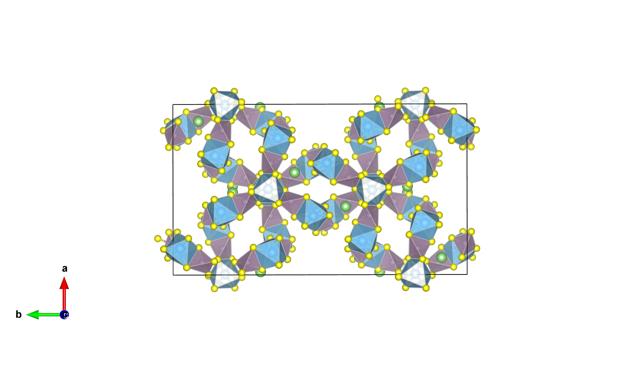A new material for the battery of the future, made in UCLouvain

UCLouvain's researchers discovered a new high performance and safe battery material (LTPS) capable of speeding up charge and discharge to a level never observed so far. Credit: University of Louvain (UCLouvain)
What do we have now?
The Li-ion technology is currently the best performing technology for energy storage based on batteries. Li-ion batteries are used in small electronics (smartphones, laptops) and are the best options for electric cars.
Their drawback? Li-ion batteries can catch fire, for instance because of a manufacturing problem. This is due in part to the presence of liquid organic electrolytes in current batteries. These organic electrolytes are necessary to the battery but highly flammable.
The solution? Switching from a liquid flammable electrolyte to a solid (i.e., moving to « all-solid-state » batteries). This is a very difficult step as lithium ions in solids are less mobile than in liquids. This lower mobility limits the battery performances in terms of charge and discharge rate.
The discovery made by UCLouvain
Scientists have been looking for materials that could enable these future all-solid-state batteries. Researchers from UCLouvain recently discovered such material. Its name? LiTi2(PS4)3 or LTPS. The researchers observed in LTPS the highest lithium diffusion coefficient (a direct measure of lithium mobility) ever measured in a solid.
LTPS shows a diffusion coefficient much higher than known materials. The results are published in the prestigious scientific journal Chem from Cell Press.
The discovery? This lithium mobility comes directly from the unique crystal structure (i.e., the arrangement of atoms) of LTPS.
The understanding of this mechanism opens new perspectives in the field of lithium ion conductors and, beyond LTPS, opens an avenue towards the search for new materials with similar diffusion mechanisms.
What's next? The researchers need for further study and improve the material to enable its future commercialization.
This discovery is nevertheless an important step in the understanding of materials with extremely high lithium ion mobility which are ultimately needed for the developing the “all-solid-state” batteries of the future. These materials including LTPS might end up being used in many the technologies that we use in our daily lives from cars to smartphones.
###
This research was performed in collaboration with Toyota, which supported scientifically and financially the study. A patent has been filed listing the UCLouvain researchers as inventors.
Media Contact
More Information:
http://dx.doi.org/10.1016/j.chempr.2019.07.001All latest news from the category: Materials Sciences
Materials management deals with the research, development, manufacturing and processing of raw and industrial materials. Key aspects here are biological and medical issues, which play an increasingly important role in this field.
innovations-report offers in-depth articles related to the development and application of materials and the structure and properties of new materials.
Newest articles

A ‘language’ for ML models to predict nanopore properties
A large number of 2D materials like graphene can have nanopores – small holes formed by missing atoms through which foreign substances can pass. The properties of these nanopores dictate many…

Clinically validated, wearable ultrasound patch
… for continuous blood pressure monitoring. A team of researchers at the University of California San Diego has developed a new and improved wearable ultrasound patch for continuous and noninvasive…

A new puzzle piece for string theory research
Dr. Ksenia Fedosova from the Cluster of Excellence Mathematics Münster, along with an international research team, has proven a conjecture in string theory that physicists had proposed regarding certain equations….



